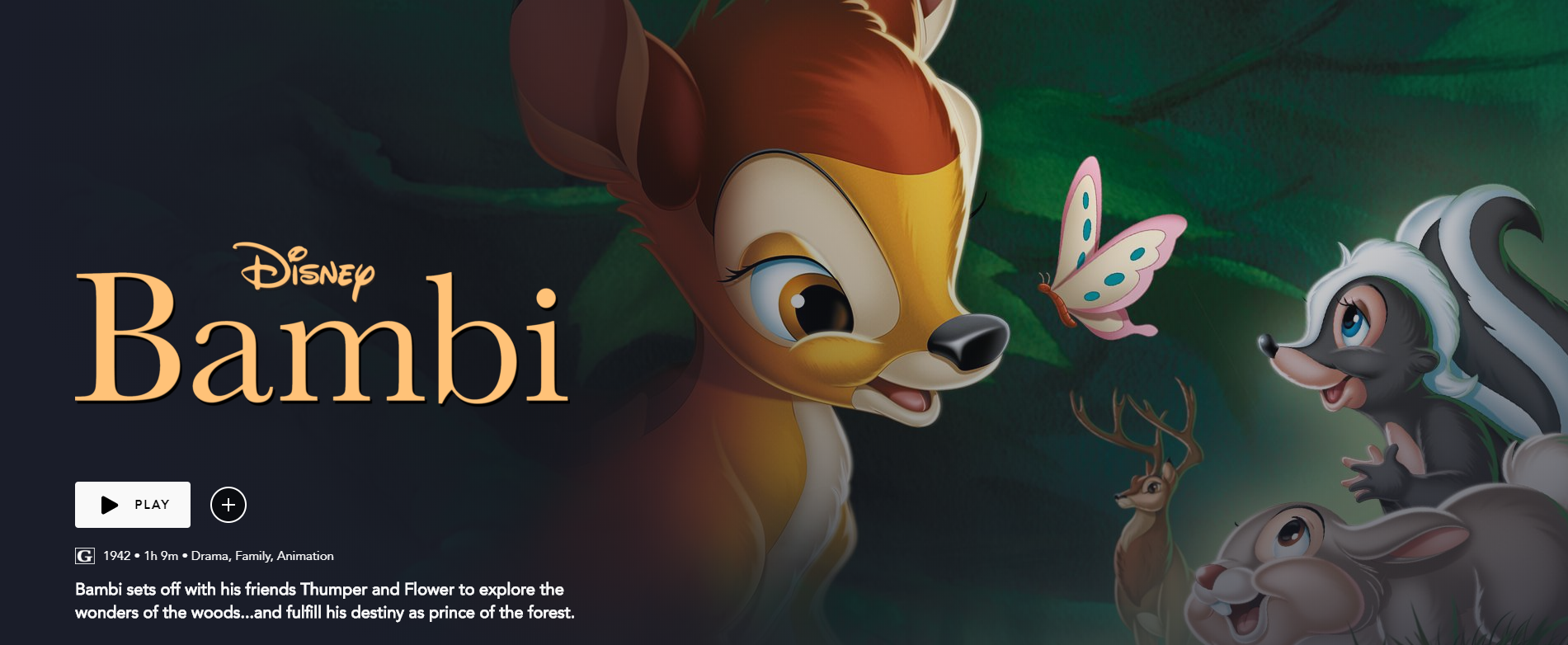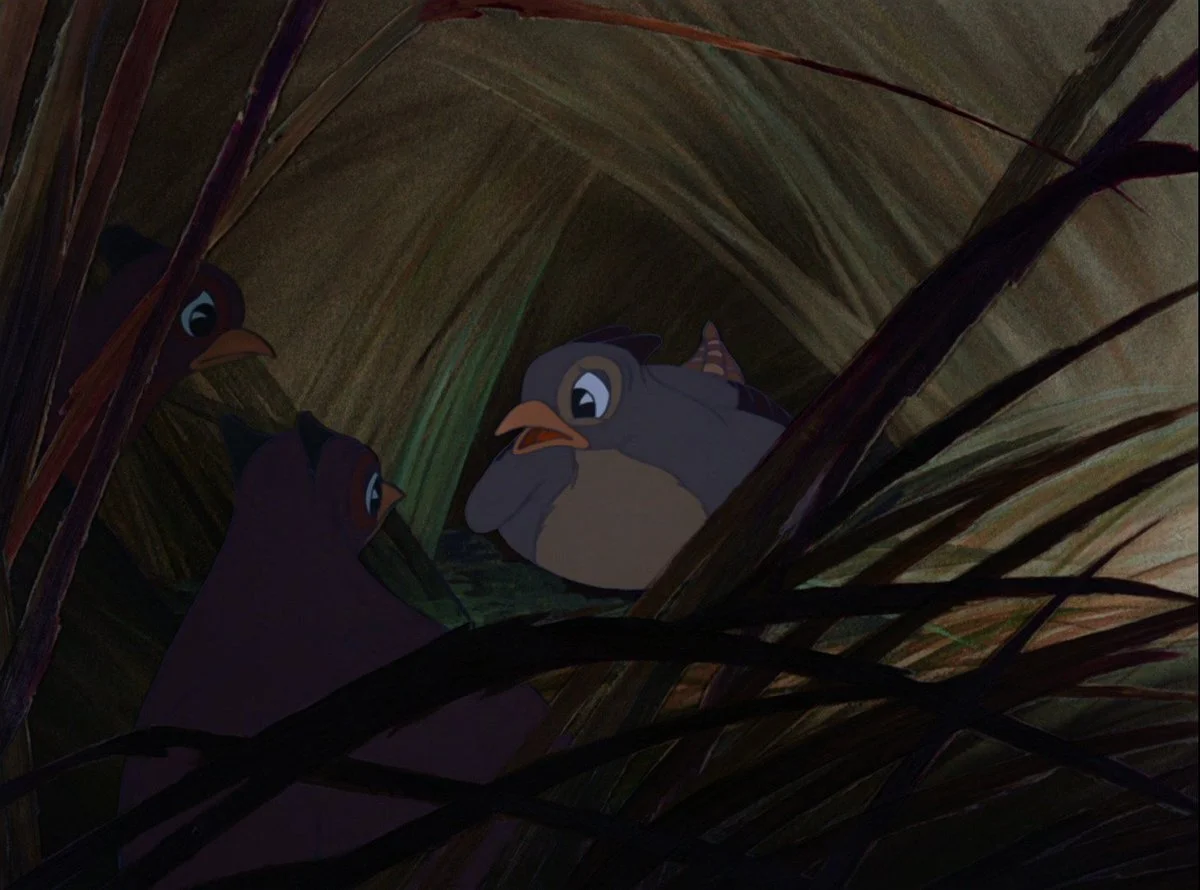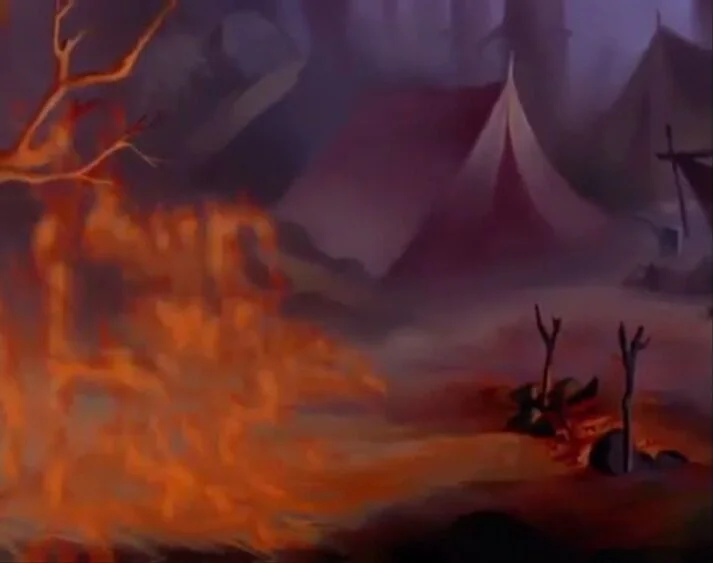Review: Bambi (DMC #6)
Happy New Year, fellow Disnerds! We hope you all enjoyed the holidays. We’re kicking off our first post of 2020 with our review of Bambi, the sixth film in our Disnerd Movie Challenge. Read on for a recap if you’ve forgotten the story or haven’t seen it before, or skip ahead to our review.
Synopsis
Forest animals awake one morning spreading exciting news — a doe has just given birth to a fawn she names Bambi, who is destined to become the Great Prince of the Forest, a title currently held by an older stag. Bambi becomes close friends with an energetic rabbit named Thumper, a bashful skunk named Flower, and a female fawn named Faline. As he grows up, Bambi’s mother teaches him about the forest, particularly the dangers of Man. His mother takes him to a meadow where he first sees the Great Prince. At that moment, Man arrives in the forest and frightens all the deer away. Bambi is momentarily separated from his mother until the Great Prince rescues him. Eventually winter settles in, and while some animals including Flower hibernate, Bambi and Thumper play in the snow.
When winter begins to wane, Bambi and his mother return to the meadow to feast on new spring grass. His mother senses Man’s presence and urges Bambi to run. Bambi escapes, but his mother is shot and killed by the hunter, leaving Bambi alone. He is taken in by the Great Prince, who reveals himself to be Bambi’s father. The following year, Bambi has grown into a young stag complete with a growing set of antlers. He and the now grown up Thumper and Flower are warned about twitterpation from Friend Owl, and although they vow never to fall in love, they all soon pair up, with Bambi having reunited with Faline. A rival deer ties to force Faline away from Bambi until Bambi defeats him. Shortly after, the Great Prince informs Bambi that Man has once again returned to the forest. His unattended campfire soon breaks out into a destructive wildfire that nearly consumes the forest, but Bambi, his father, Faline, and the forest animals are able to escape. Eventually the fire is put out, and life continues in the forest. The following spring, it begins anew as Faline gives birth to twin fawns and Bambi takes over from his father as the new Great Prince of the Forest.
Thoughts Before Watching
Megan: I remember thinking the movie Bambi was cute. I loved the interactions between Bambi and Thumper and Flower, but I also remember being sad when Bambi’s mom dies. I know I enjoyed the movie as a kid, but even though I love animals this movie didn’t get a lot of replays in my house. Although I will say that any time my family went into a forest and came upon a meadow, all of us kids, no matter how old we were, had to shout out “THE MEADOW!” as Bambi does in the movie. I haven’t seen this movie in full since I was a kid, so I’m curious to see how much I remember.
Kevin: Out of the pre-war films, Bambi was my favorite. Based on my memories of this film, this is where I think Disney really found their groove with their features. This isn’t to say that everything came before it wasn’t good, or had their own merits. It’s just that this movie feels more well put together from start to finish.
Thoughts After Watching
Kevin: For how much I like this, there’s a lot about this film I forgot about. In my mind scenes either took place at later or earlier points (such as Bambi first meeting Faline), or I forgot about them entirely (such as Bambi and Thumper playing in the snow). For reasons unknown, I thought more of the film was focused on Bambi’s adulthood vs. his childhood. In hindsight, it makes far more sense that his childhood is the main focus since this is largely a coming of age story.
Kevin: My thoughts remain the same as before, but I have more I can dive into. I still think this is the best film of the pre-war era. Overall this film has more interesting (and more adorable) characters, better animation, and stronger messages than its predecessors. My score near the end of this matches The Reluctant Dragon, but for different reasons. Where The Reluctant Dragon got its score from the animation nerd in me, this film receives its score for its sheer artistry. The colors of this film are so rich and beautiful, on par with the films of the 1950s and ‘60s (lookin’ at you, Lady and the Tramp and The Jungle Book). There’s something about the backgrounds and seeing the brushstrokes in those colors that I just appreciate. Compared to most other films prior to this, this has probably the most realistically designed characters, even with the exaggerations.
This film showcases a positive message about parents.
Kevin: Aside from the artistry of this film, the characters are more endearing to me. When looking at the films since Snow White, there is no better relationship than the one between Bambi and his mother. I say this even compared to Dumbo and his mother. Maybe it’s not fair to compare the two since Mrs. Jumbo was locked up half the film, but then again Bambi’s mother loses her life. Watching Bambi be introduced to new friends and the world around him as he’s growing up, and all through the loving guidance of his mother, is something I identify with. I think this is because of my own close relationship with my mother. In fact, the way parental relationships are expressed in this movie is, in many ways, something I identify with. Now, my own father was not distant compared to Bambi’s father. Rather, both of my parents are like Bambi’s mother. When I was a child, the death of Bambi’s mother affected me so deeply that I would unwittingly find myself thinking about my parents’ passing. Now that I think about it, is this the first Disney film where a parent is killed off? I think it is. And thus begins a long tradition…
“Twitterpated” isn’t all that bad.
Kevin: Sorry if that got depressing for a moment, so moving on to something lighter! I think the way Friend Owl explains love in the form of “twitterpated” is actually quite accurate. Falling in love is sometimes a scary thing and it makes you do and think crazy things. That said, I think this film explores it in healthy ways; though our characters try to avoid it at all costs, at first thinking it detrimental, they ultimately find enrichment by falling in love and, ultimately, starting families of their own. Also, the female characters are fun to watch; Faline is fun from childhood to adulthood, and I swear that female bunny is a huge flirt.
This is truly a movie for animal lovers.
Megan: Like I said before, I have always loved animals, and I think films like this are part of the reason. Disney has thrown in a lot of subtle lessons about nature, like how deer eat bark in the winter, and how skunks and other animals hibernate, and even how animals become “twitterpated” in the spring. Also, the way the animation captures the movements of the animals is so lifelike. I love watching the smaller animals (like how the baby bird in the opening steals the berries from its siblings, or how the little mouse washes its face with a dew drop) and how baby Bambi learns to walk. This movie also does a great job in drawing parallels between the baby animals (Bambi, Faline, Thumper and his sisters, Flower) and how human children behave, like how Thumper’s mother is always reminding him “What did your father tell you?” and how Thumper and his sisters get excited about every new thing Bambi learns. The way Bambi and Faline interact upon their first meeting reminds me very much of how my siblings and I were when we were really little.
I think because I loved animals so much as a kid I especially did not like hunters, or the idea of hunting in general, after watching this movie. Obviously everyone remembers that Bambi’s mom dies from a hunter’s gun, but for me what is almost more frightening is when the pheasant gets shot. As the pheasant hiding in the brush grows ever more frightened, all the other pheasants around her urge her to stay calm and quiet and “whatever you do, don’t fly,” but sitting there waiting is too much for her and she flies—and is immediately shot dead. The music and the sense of urgency in the pheasants’ voices adds to the sense of fear, and I distinctly remember feeling scared for them when I watched this movie as a kid.
“Man is in the forest.”
Megan: Speaking of the hunting scenes, I’d like to point out that it’s never “hunters are in the forest” or “humans are in the forest”—it is always “man is in the forest.” Therefore, it is assumed that those doing the hunting are male, since we never actually see them—we only hear their gunshots and see their dogs. The only animals that we can confirm are killed by “man” are Bambi’s mother and the female pheasant. So, by this logic, males are killing females—and that’s kind of a problem. Bambi does get shot or at least grazed by a bullet (we never see evidence of his wound, so it’s hard to say), but he survives. It is only female animals who die at the hands of “man.” Also, “man” is responsible for the fire that destroys most of the forest and forces all the animals to flee their homes (but more on that in a minute).
Still doesn’t pass the Bechdel test…
Megan: So this didn’t quite surprise me, but this movie also fails the Bechdel test because the only two female characters who talk to each other are Faline and her mother, and then they are talking about Bambi. On the whole, though, I like that there aren’t as many gendered messages in this film compared to the other movies we’ve watched in the challenge thus far. I think part of this is helped by how firmly the creators stuck to the natural way creatures interact in the wild. While in a film about humans I would object to men fighting over a woman, I don’t mind it as much when it’s Bambi and a rival stag fighting over Faline (I could still do without that scene, but I know that’s how deer act in the wild, so I’ll let it slide). The only objection I really have is the “sexy” bunny that Thumper falls for—she is the only female animal that, to my mind, is sexualized a bit unnecessarily.
This movie still holds up in light of current climate change conversations.
Megan: Though the movie doesn’t explicitly make any claims about climate change (and why would it? It was made long before that became part of cultural conversations), it does send some strong messages about the impact humans have on nature that are particularly relevant now (especially with the huge fires raging in Australia right now). For example, we see that it is an unattended campfire that spreads beyond the camp and destroys most of the forest, causing the animals to swim across a body of water to safety. There is also the “hunting is bad” message—not just that hunters killed Bambi’s mother and left him on his own, but that they are a danger to all the animals in the forest and cause them to live in fear. The meadow, as Bambi’s mother tells him, is a wonderful place, but it is also incredibly dangerous because there is nowhere to hide. If any of the forest creatures wish to enjoy the bounties of the meadow, they must also risk their lives—and with no other predators other than “man” and the hunting dogs in this film, it is clearly the fault of humans that they cannot enjoy this place. A good reminder to all of us of the impact we have on our environment, and how important it is to be stewards of nature, not destroyers.
Verdict
Megan: 6
Kevin: 7
Final Score: 6.5
What about you? Where do you rank this movie?








